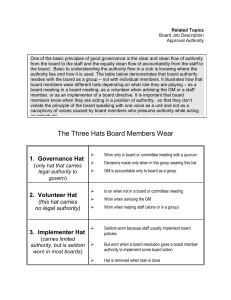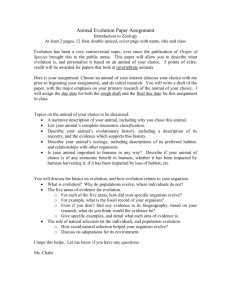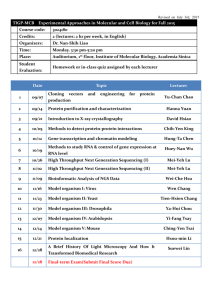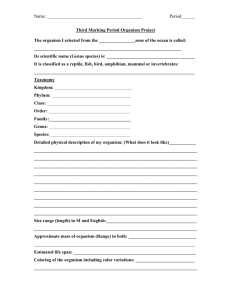Classification of Organisms (Ch 17 Advanced)
advertisement
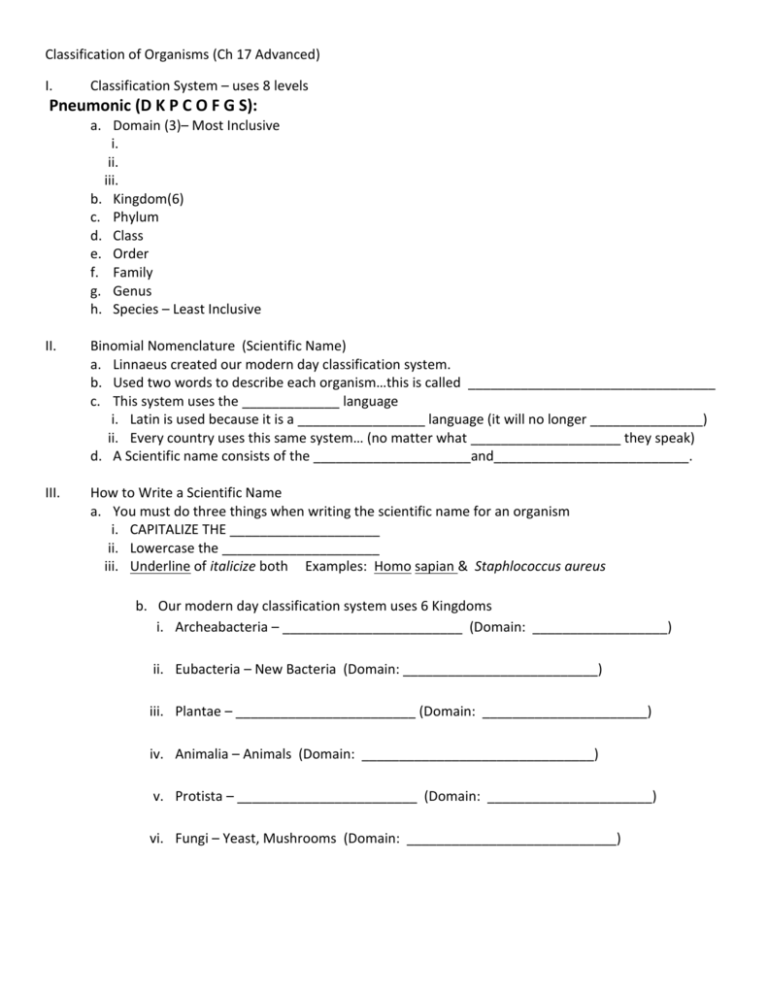
Classification of Organisms (Ch 17 Advanced) I. Classification System – uses 8 levels Pneumonic (D K P C O F G S): a. Domain (3)– Most Inclusive i. ii. iii. b. Kingdom(6) c. Phylum d. Class e. Order f. Family g. Genus h. Species – Least Inclusive II. Binomial Nomenclature (Scientific Name) a. Linnaeus created our modern day classification system. b. Used two words to describe each organism…this is called _________________________________ c. This system uses the _____________ language i. Latin is used because it is a _________________ language (it will no longer _______________) ii. Every country uses this same system… (no matter what ____________________ they speak) d. A Scientific name consists of the _____________________and__________________________. III. How to Write a Scientific Name a. You must do three things when writing the scientific name for an organism i. CAPITALIZE THE ____________________ ii. Lowercase the _____________________ iii. Underline of italicize both Examples: Homo sapian & Staphlococcus aureus b. Our modern day classification system uses 6 Kingdoms i. Archeabacteria – ________________________ (Domain: __________________) ii. Eubacteria – New Bacteria (Domain: __________________________) iii. Plantae – ________________________ (Domain: ______________________) iv. Animalia – Animals (Domain: _______________________________) v. Protista – ________________________ (Domain: ______________________) vi. Fungi – Yeast, Mushrooms (Domain: ____________________________) IV. Examples of Features Used to Classify Organisms a. Cell Type i. Prokaryotic cells – ________________________________________________ ii. Eukaryotic cells – Has organelles and a nucleus. b. Cell Number i. Unicellular – Organism is made of ____________________________________ ii. Multicellular – Organism is made of _______________________________cell. c. Nutrition i. Autotrophic – Latin word meaning – ________________________________ ii. Heterotrophic= Latin word meaning other-feeding. ________________________ d. Cell Structure – Presence or absence of a ________________________ V. VI. How to Use a Taxonomic Key a. Taxonomic keys are a “________________________” which helps the scientist “key” an organism (locate a name for the organism). b. These keys use pairs of ________________________, labeled 1a & 1b then 2a & 2b. c. 1a & 1b must address the ________________________ defining characteristic. d. 1a ______________________________have the defining characteristic and 1b will have the defining characteristic. e. Line 1b _________________________________as a HAT if worn on the HEAD f. Your last two contrasting statements will end with two names. For Example: to key a hat, shoe & glove a. 1a. Object is worn on the body…………...go to 2 b. 1b. Object is worn on the head…………….….HAT c. 2a. Object has five projections………….....GLOVE d. 2b. Object has no fingerlike projections….SHOE e. Line 1a directs the scientist to the next set of contrasting statements numbered 2a & 2b, if the object is worn on the BODY. f. Line 1b labels the object as a hat if worn on the HEAD


